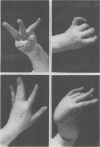Abstract
A disease consisting of persistent muscle cramps involving distal muscle groups that occurred in 12 members of the same family is described. The cramps appeared on exertion and in full relaxation or during sleep. In the third generation they appeared in the second decade; in the fourth and fifth generations in childhood with higher frequency and intensity of cramps. The disease is not sex linked and seems to be dominantly inherited. Electromyography showed no myotonic response on insertion. Motor unit potentials were normal. Continual waxing and waning electrical discharges corresponding to clinically visible contractions of parts of the muscles were present. Repetitive nerve stimulation caused no change in the amplitude of evoked muscle potentials. On spinal anaesthesia or nerve block the muscle contractions continued but became painless. The movements were only stopped with local infiltration of anaesthetic into the muscle. There were no cramps on ischaemic work. Drug studies revealed no benefit on carbamazepine, slight relief with meprobamate, and complete disappearance with potassium chloride. The remission outlasted the treatment for three months and then cramps of milder degree reappeared. Repeated potassium chloride treatment was not effective. The cramps increased on hydrochlorothiazide, and 12 hours after spinal anaesthesia. In the authors' opinion the disease should be considered as not belonging to any known nosological entity.
Full text
PDF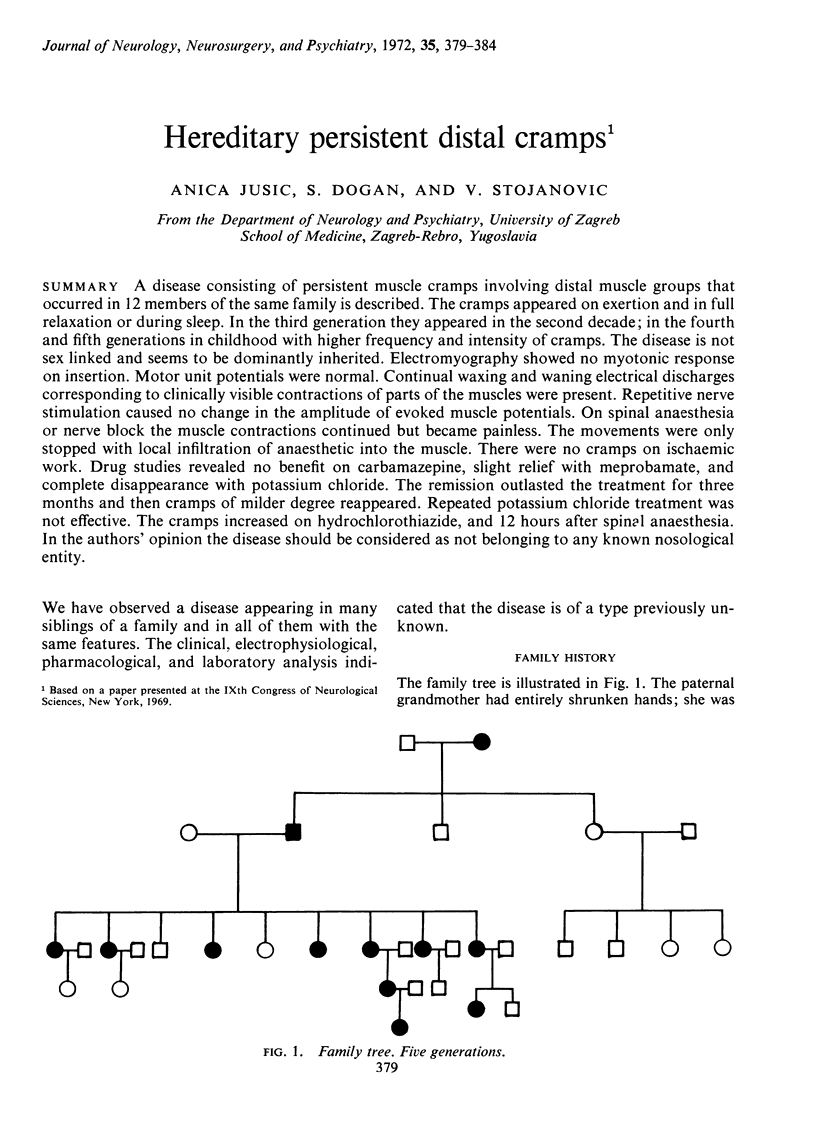
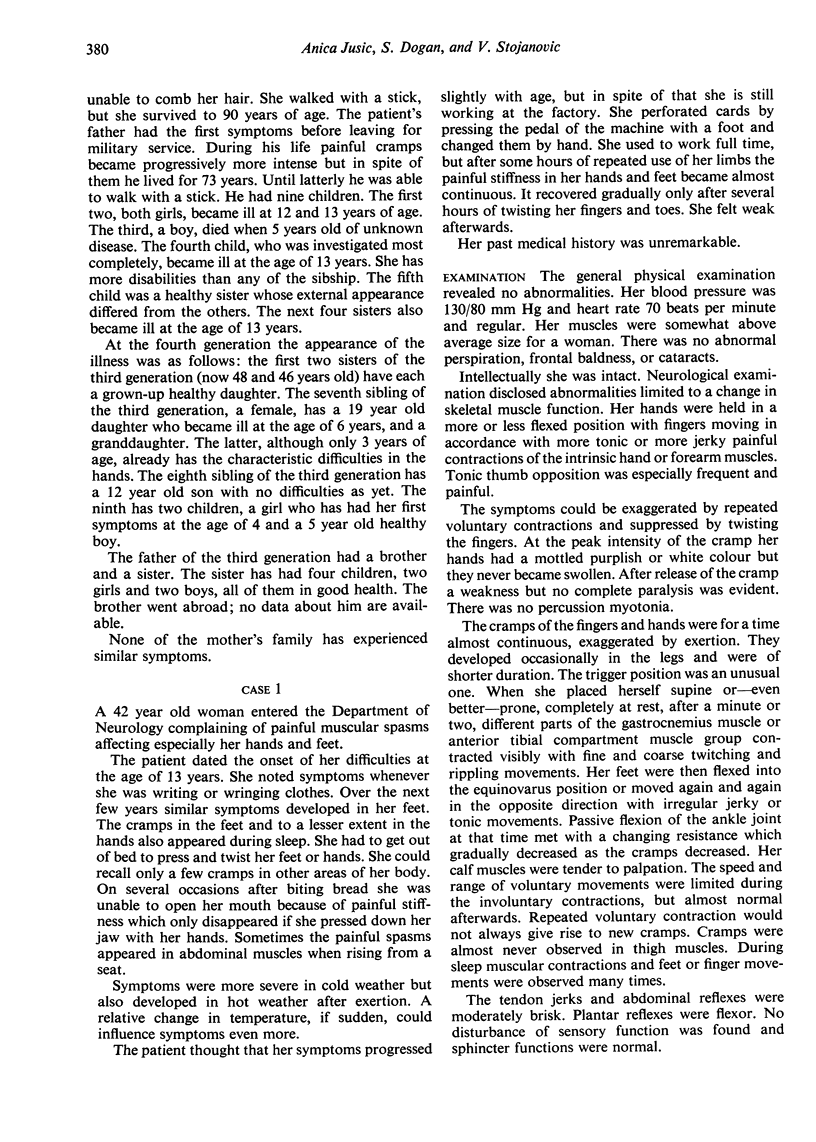
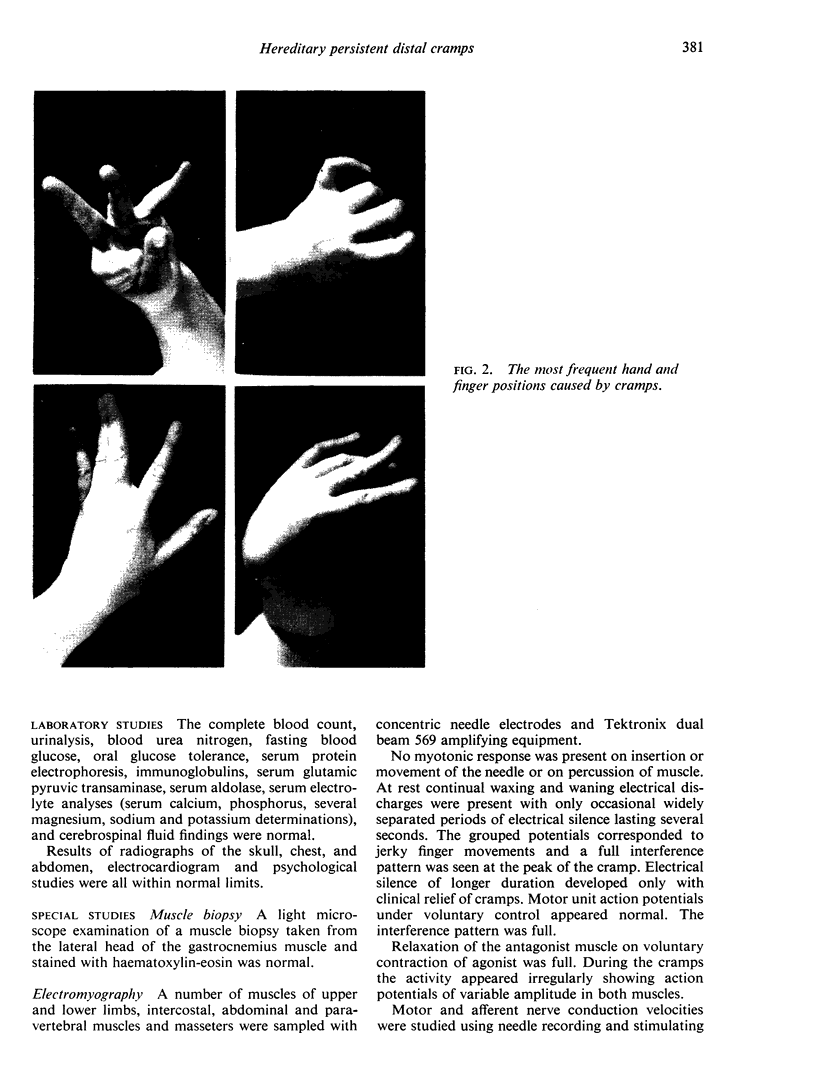
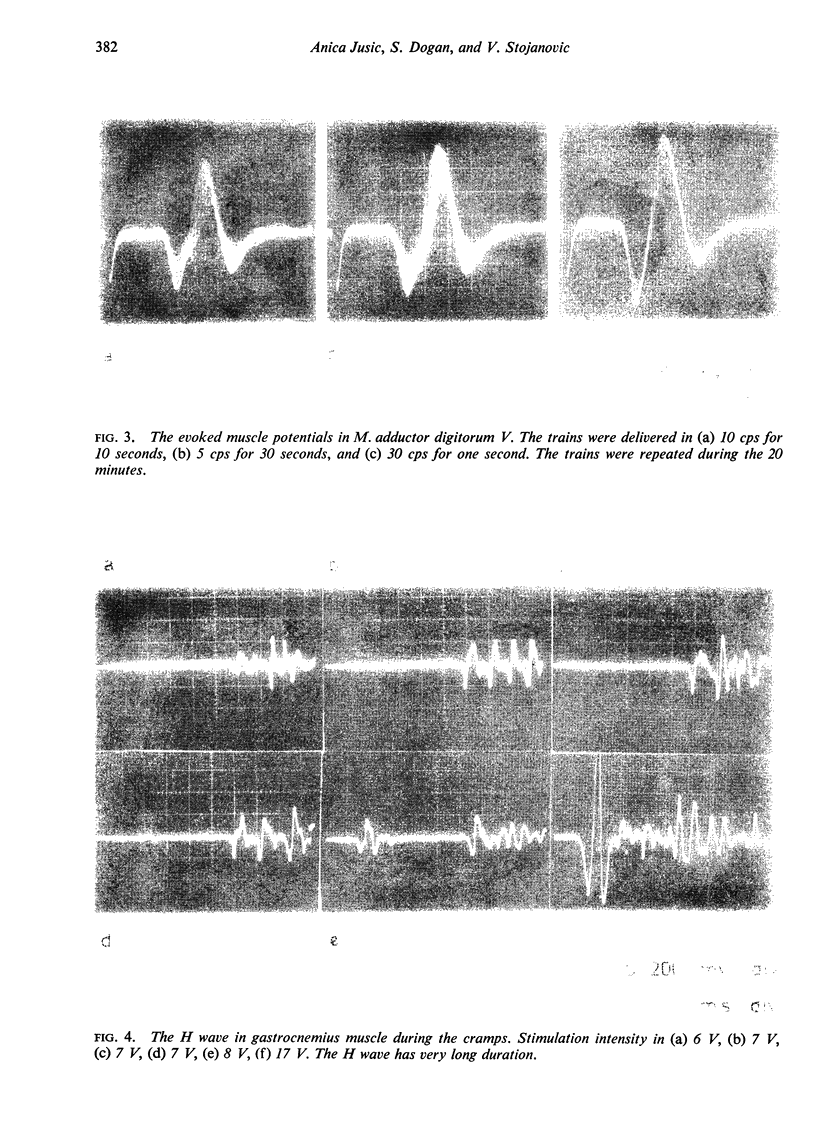
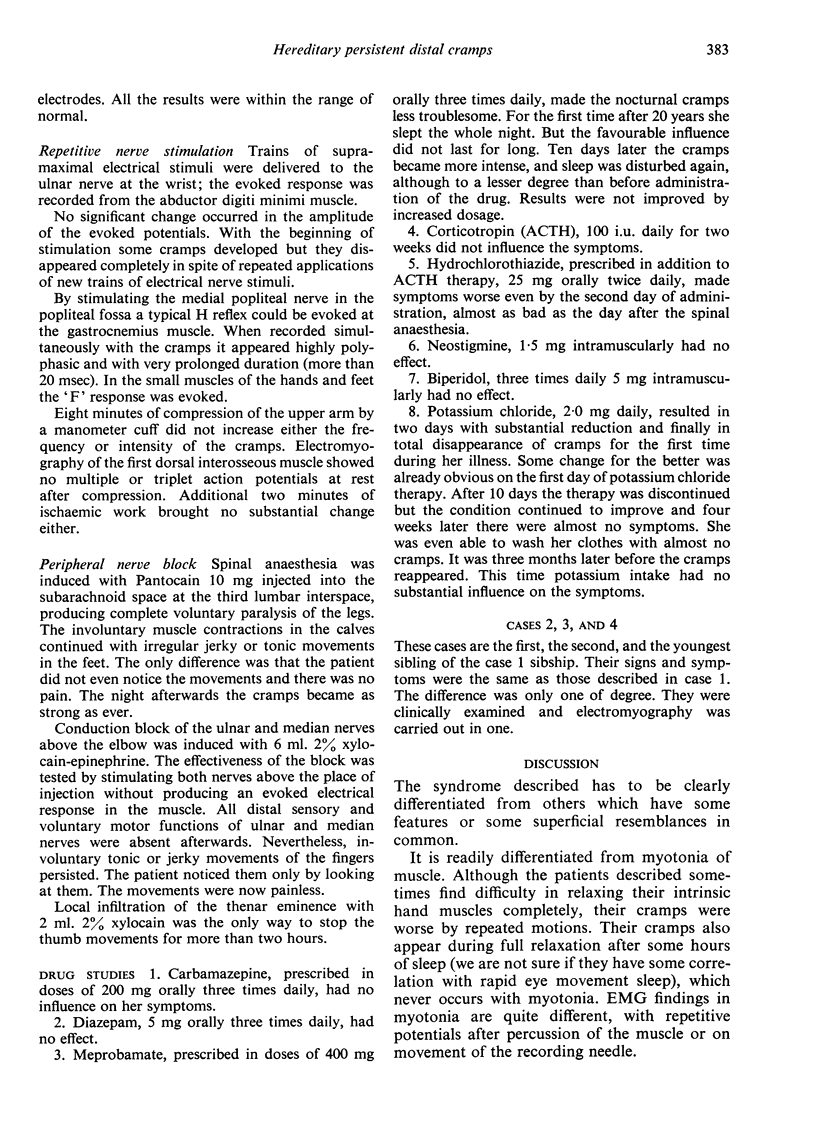
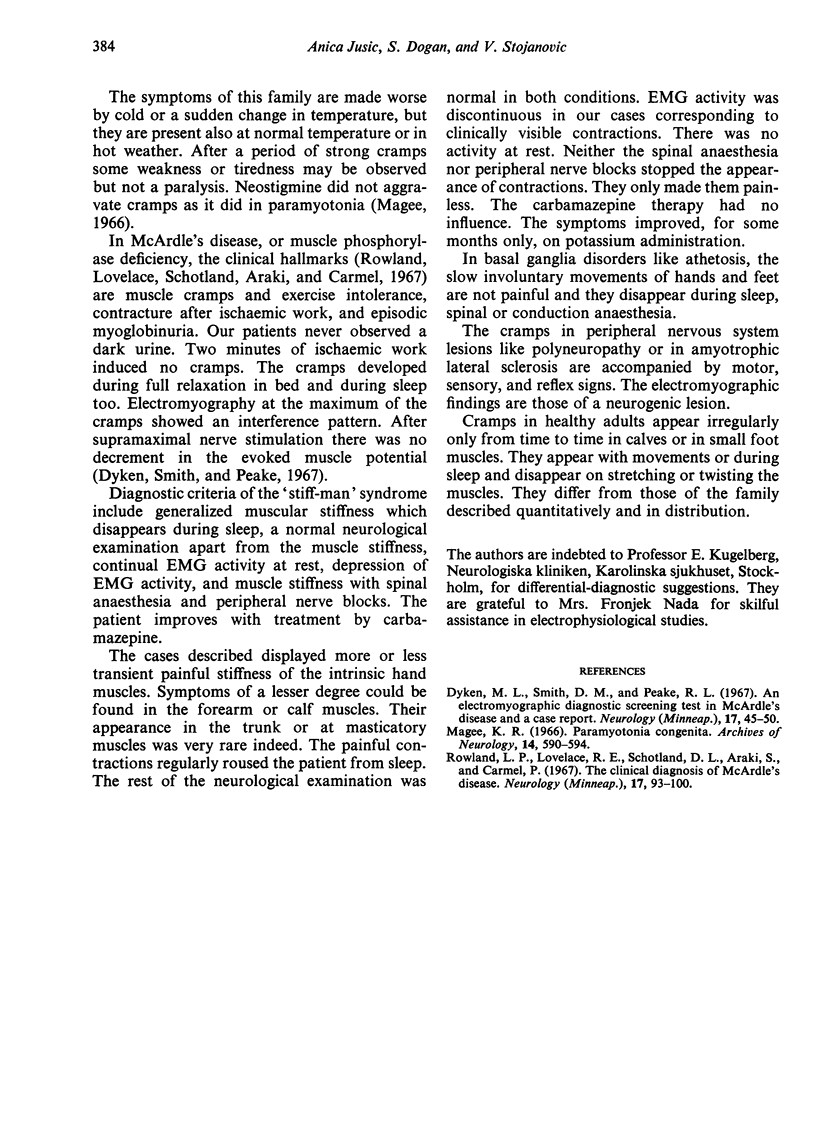
Images in this article
Selected References
These references are in PubMed. This may not be the complete list of references from this article.
- Dyken M. L., Smith D. M., Peake R. L. An electromyographic diagnostic screening test in McArdle's disease and a case report. Neurology. 1967 Jan;17(1):45–50. doi: 10.1212/wnl.17.1.45. [DOI] [PubMed] [Google Scholar]
- Magee K. R. Paramyotonia congenita. Association with cutaneous cold sensitivity and description of peculiar sustained postures after muscle contraction. Arch Neurol. 1966 Jun;14(6):590–594. doi: 10.1001/archneur.1966.00470120022003. [DOI] [PubMed] [Google Scholar]



